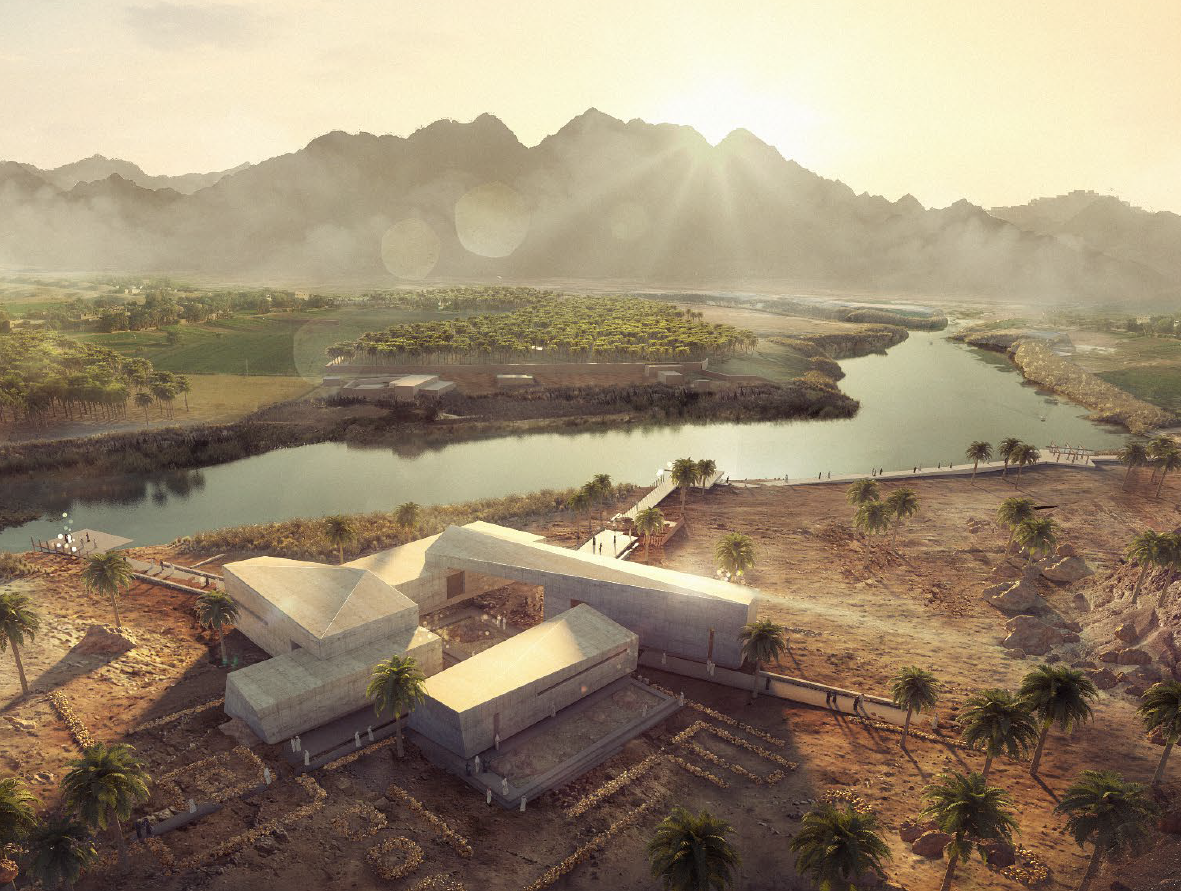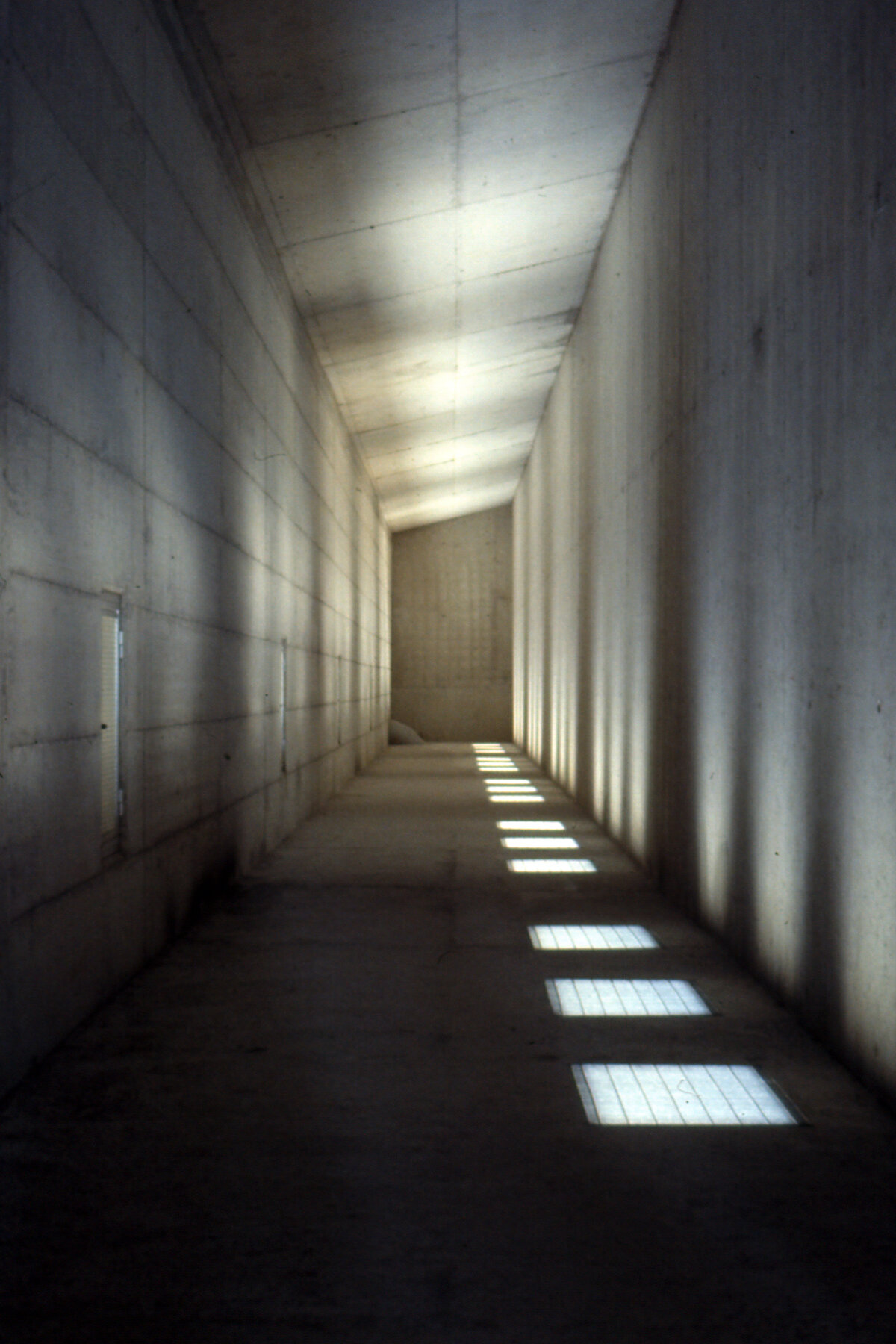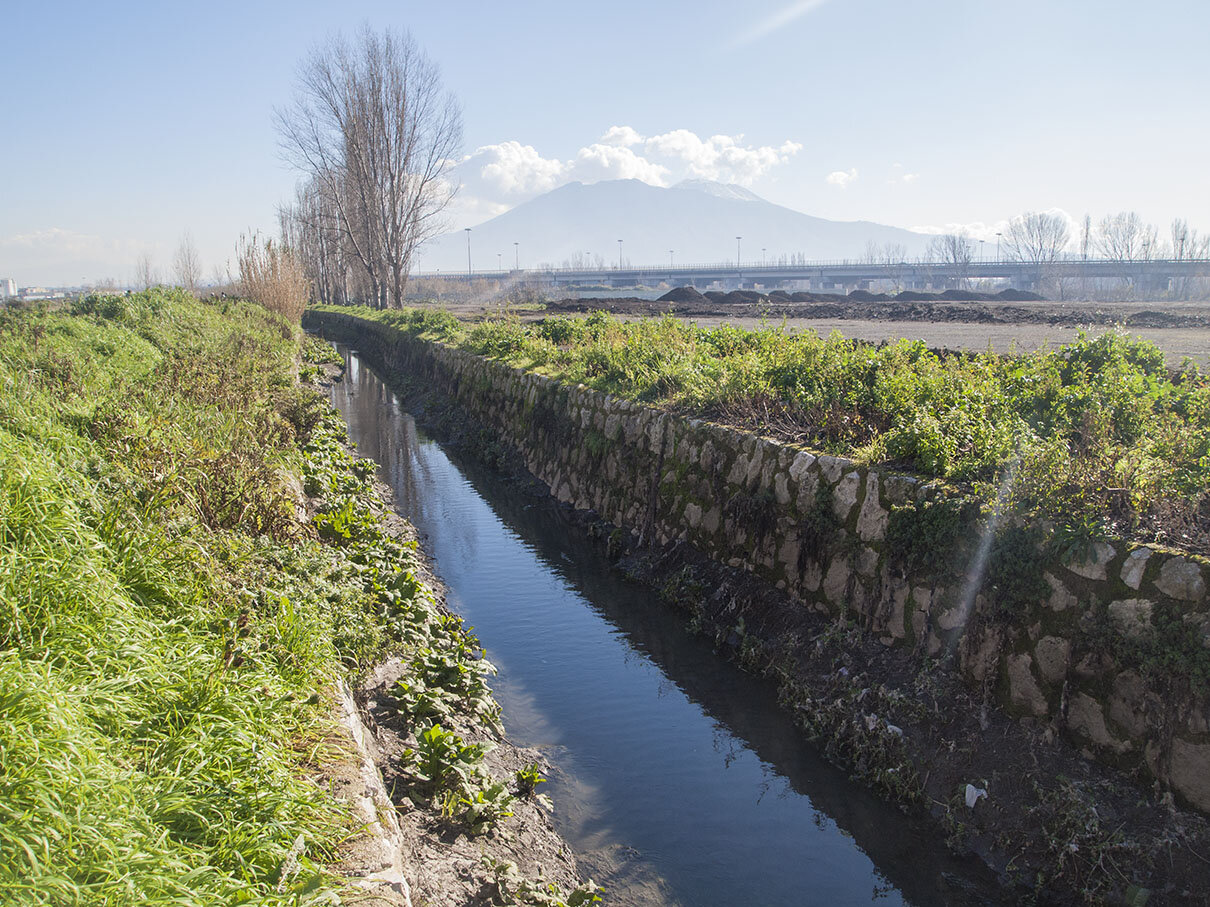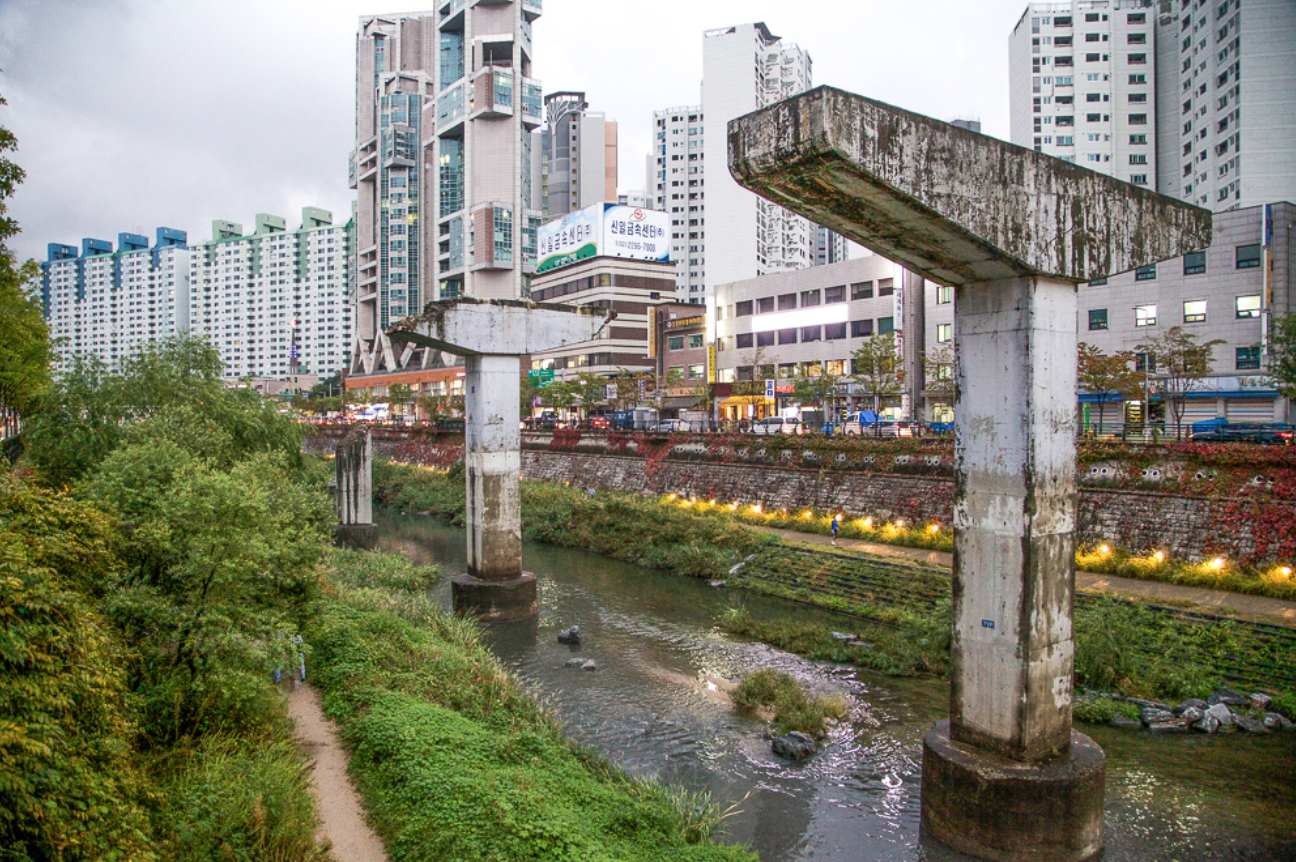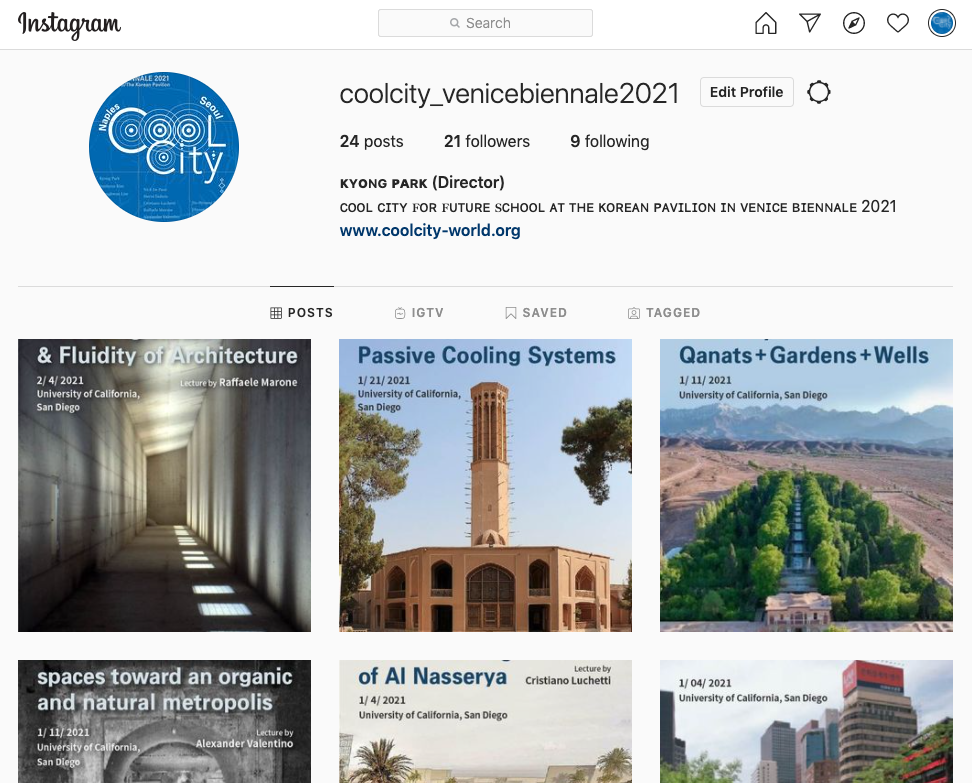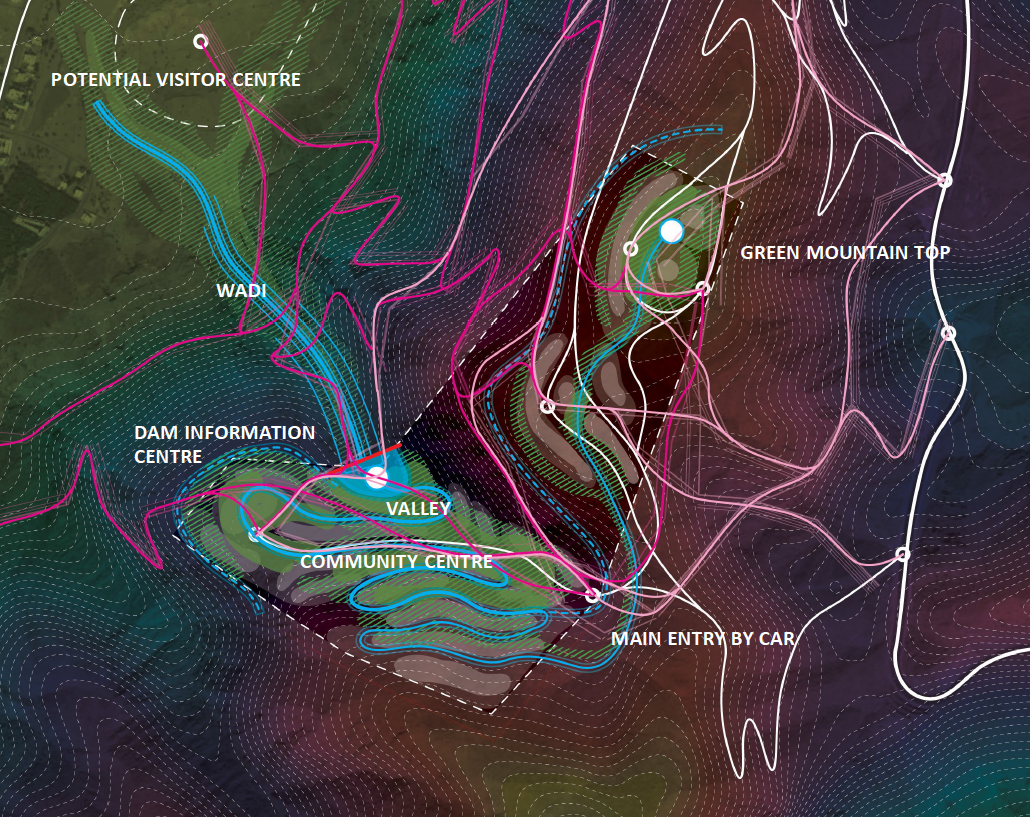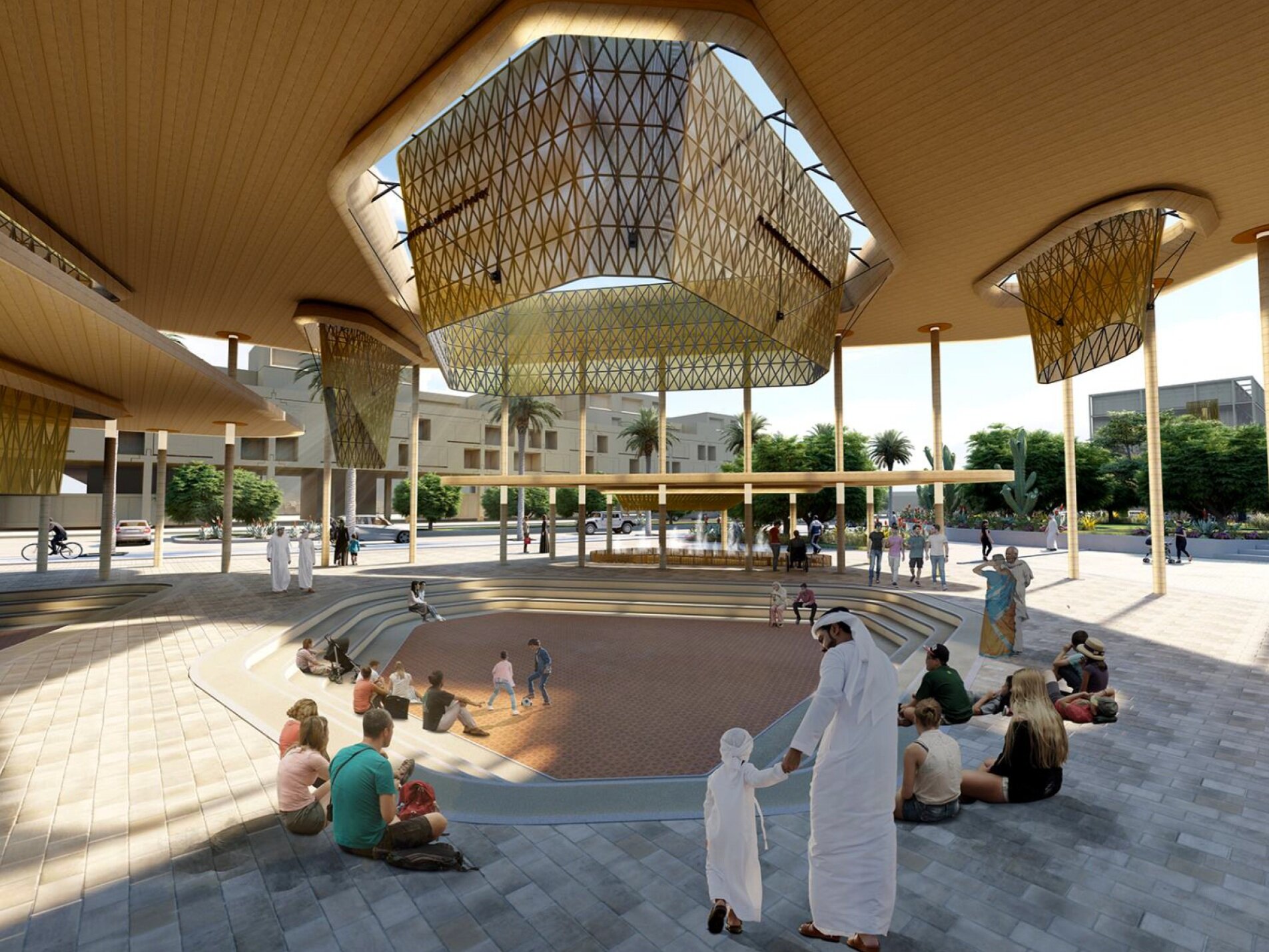Cool City Lab -Seoul Workshop Call for Participants
Upending the Logic: Inverse Urban Heat Island Effects in Arabian Gulf Cities
Lecture by Steven Velegrinis
Most cities around the world suffer from heat islands, an outcome from the process of urbanization.
In the Arabian Gulf, however, urbanization has led to an Inverse Urban Heat Island effect. Water and the cautious (re)use of water plays an essential albeit indirect role in this urban alchemy. Through the lens of a landscape manifesto for a new city in the Middle East, this lecture will outline how we can use the experience of cities such as Dubai and Singapore to address Urban Heat Island Effects.”
Inhabiting Water & Fluidity of Architecture
Lecture by Raffaele Marone
The lecture will be developed in two parts. The first part is poetic of “exalted architecture,” such as the inside/outside relation in a building, the scale and the body, space as sequences, states of mind into space, sound, and space, contemporaneity as the continuous transfiguration of historical elements. With the states of mind as the core to perceptions of space, architecture design shapes the structure of “exalted living space” where different sensual effects in different spaces.
The second part is about how opposite density lives together in architectural spaces, such as emptiness for human living and fullness for water. In other parities of architecture, there is the relationship of the buildings with the urban and natural landscape, the role of time in the perception of living space. Architect Marone will also talk about water in architecture, such as aqueduct facilities (water reservoirs, pumping station), a river sound listening room, a floodable exhibition building in a river bed, pools in dwellings and services complex, and how water can be used as a sort of a fluid construction material creating different states of mind in living spaces in “exalted architecture.”
The reinvention of urban spaces toward an organic and natural metropolis
Lecture by Alexander Valentino
Urban spaces in Naples are strongly characterized by the abundance of various natural elements that have defined and supported the life of its inhabitants. This balanced relationship between humans and nature remained almost unchanged for millennia. But strong urbanization of the last few hundred years, nature, and the water of Naples have given way to cement and other artificial materials, through modernization and developments, like so many other cities. As the result, the nature of Naples is relegated, confined, and hidden. This lecture will be about Naples’ attempt to return to symbiosis with its nature that has historically defined its culture and urban heritage.
The Urban Regeneration of Al Nasserya
Lecture by Cristiano Luchetti
The Sharjah Department of Planning and Survey and Sharjah Urban Planning Council have recently started independent initiatives to explore and propose ways by which deteriorated neighborhoods can be enhanced. The mandate is to maintain the existing housing stock (structurally intact ones) and propose enhancements to the public realm and social infrastructure of those areas based on the needs and specificity of each neighborhood. One of the mandates is to find ways to attract Emirati families back to these neighborhoods without necessarily displacing the existing population.
The Urban and Architectural Design Studio ARC501 Section 3 at the American University of Sharjah, first investigated through mapping, surveys, and fieldwork the existing conditions of Al Nasserya, thereafter proposed innovative solutions grounded on the findings of the research. Students looked for alternative means of intervention other than conventional approaches with a focus on sustainability. They had the freedom to identify the scale and brief of their proposals - whether it would be a block or the whole neighborhood, or a single building along with the surrounding affected public realm.
Cool Seoul
Lecture by Kyong Park
Because of the historical absence of parks, plazas, and other centrally located open spaces that have been traditional in the European cities, the city of Seoul, and other South Korean cities, has instead relied on its rivers and creeks as the main source of public spaces for recreation and communal purposes. And like other cities around the world, modernization of urban spaces has redeveloped and altered most of their rivers and creeks, burying them under roads, buildings, and parking spaces. However, to prepare for the 1988 Seoul Olympics, the government's launch the Hangang River Development Project from 1982 to 1986, creating a 41.5 km long and 39.9 km2 linear park that began to provide much needed green and open spaces for its citizens. Its success has brought the Hangang Renaissance Project (2007-2030) to further expand and improve this growing linear park, together with the Cheong Gye Chon Restoration, a $900 million project that unearthed the most important creek at the heart of Old Seoul that was buried under a road and an elevated highway into an 8.4 km (5.2 mi) long linear park that opened in 2005. Along with the above projects, this lecture will present why and how South Korean cities have developed Linear Park Systems throughout their cities.
Latest News
Cool City Venice Biennale 2021 is on Instagram now.
Read More →
Feb 22, 2021
Upending the Logic: Inverse Urban Heat Island Effects in Arabian Gulf Cities
Jan 25, 2021
Inhabiting Water & Fluidity of Architecture
Feb 1, 2021
The reinvention of urban spaces toward an organic and natural metropolis
Jan 11, 2021
The Urban Regeneration of Al Nasserya
Jan 4, 2021
Seoul
Jan 4, 2021


